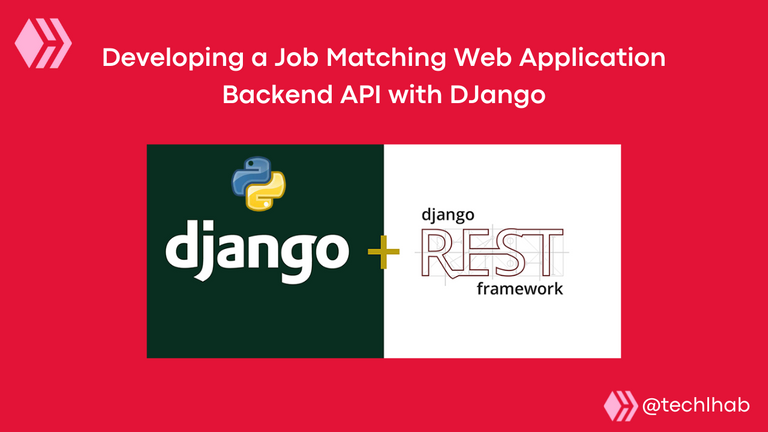
Django is a backend web application development framework built with python. Being built with python makes it very easy to code with and perform lots of functionalities easily due to the fact that it is open-source with a very large community and libraries developed to solve various specific problems when developing backend applications with Django.
Django happens to be the major backend web application development framework I use in developing the backend side of my web projects and applications. After knowing front-end development, I started backend web application software development in late 2019 which makes it almost three (3) years of experience as of now. During these years of experience, I have developed and worked on several projects and applications using Django for the backend.
Django makes it very fast and quick in developing and deploying backend web projects or applications.
Going back to discussing the topic above, which is the Development of a Job Matching Web Application Backend API with Django.
The overview of this project is that it would consist majorly of two users, employers or recruiters and individual users or job seekers. Employers can post jobs on the platform then job seekers can view jobs posted by employers and make applications to interested jobs on the platform.
First, we create a virtual environment for the project using:
python -m venv JobBackendAPIEnv
Then change the directory to the virtual environment then activate it.
Install Django using:
pip install Django
pip is a package installer for python just as npm and yarn are used in Javascripts Web Frameworks.
Install Djangorestframework using:
pip install djangorestframework
Djangorestframework is a REST API library that is been used in the development of the backend API of this project.
After installing the dependencies using the codes above, then the next thing is to create a Django project using:
django-admin startproject Job
Then change the directory to Job, and create a Django app using:
django-admin startapp app
The next thing now is to go to the settings.py file in the project Job folder then add the app created and installed to the installed app section in the settings.py file like this:
INSTALLED_APPS = [
...
'rest_framework',
'app',
...
]
Then initialize the database using:
python manage.py makemigrations
Then make migrations to the database using:
python manage.py migrate
By doing the above, we have successfully created the environment and installed dependent apps for the Job Matching Backend API web application or project.
Then the local server can be run using:
python manage.py runserver
I would be making more posts regarding this project gradually and I hope it makes an impact and through it, people can actually learn and know how to work with Django for backend web application development to a very large extent.
Thanks for reading 🤝. If you find this post interesting you can help or support it with reblogging, upvoting, and commenting, it would be highly appreciated.
I learned about this a little earlier from the https://www.softformance.com/services/django-development/ developers when I asked them for help (I've only been learning django development for a year myself)... Thanks for the detailed article on this topic, it was useful to brush up on my knowledge.
The post discusses creating a Job Matching Web Application Backend API with Django. The comprehensive guide outlines the initial steps of setting up the project environment and installing dependencies. For a deeper understanding of advanced mobile app development marketing strategies that complement this development process, check out our blog. It offers valuable insights into maximizing revenue through effective marketing techniques in the evolving mobile app landscape.